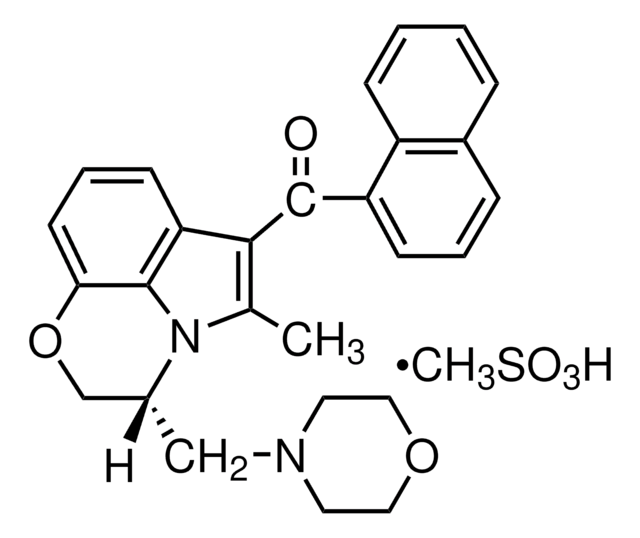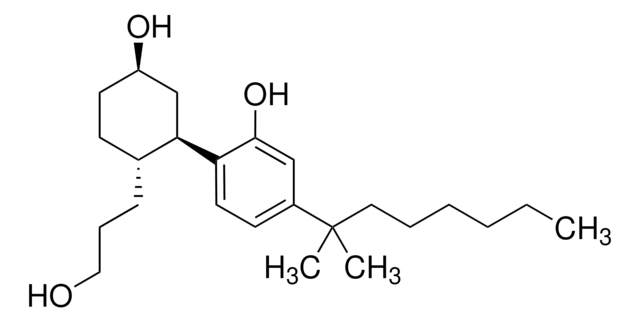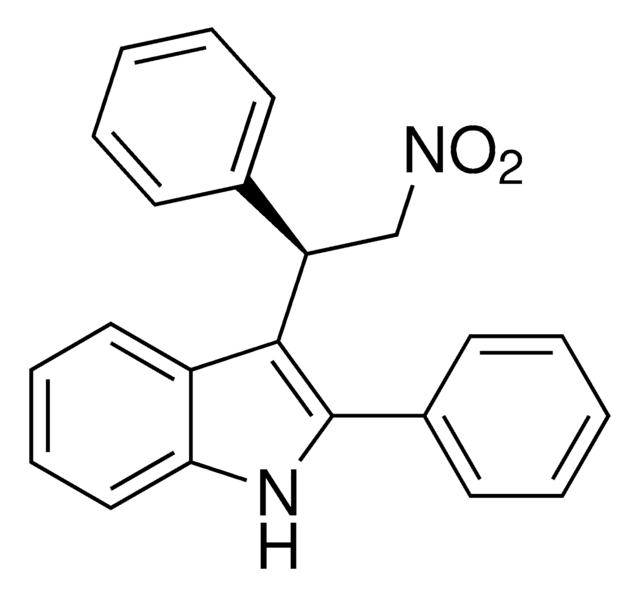A0980
AM281
≥98% (HPLC)
Synonym(s):
1-(2,4-Dichlorophenyl)-5-(4-iodophenyl)-4-methyl-N-4-morpholinyl-1H-pyrazole-3-carboxamide, AM 281
About This Item
Recommended Products
Quality Level
Assay
≥98% (HPLC)
form
powder
storage condition
desiccated
color
white
solubility
DMSO: >6 mg/mL
H2O: insoluble
storage temp.
2-8°C
SMILES string
Cc1c(nn(-c2ccc(Cl)cc2Cl)c1-c3ccc(I)cc3)C(=O)NN4CCOCC4
InChI
1S/C21H19Cl2IN4O2/c1-13-19(21(29)26-27-8-10-30-11-9-27)25-28(18-7-4-15(22)12-17(18)23)20(13)14-2-5-16(24)6-3-14/h2-7,12H,8-11H2,1H3,(H,26,29)
InChI key
AJFFBPZYXRNAIC-UHFFFAOYSA-N
Gene Information
rat ... Cnr1(25248)
Application
- to study its effects on memory deficit following naloxone-precipitated morphine withdrawal in mice
- to study the role of CB1 receptor system in modulating acetaldehyde-induced effects in rats during the extinction-, relapse-, and conflict-experiments
- to study its effect on scopolamine-induced memory deficit using object recognition paradigm
- to block synthetic cannabinoid (HU210)-induced analgesia in the ventrolateral orbital cortex (VLO) to evaluate the effect of CB1 receptors on the VLO modulation of pain
Biochem/physiol Actions
Features and Benefits
Signal Word
Danger
Hazard Statements
Precautionary Statements
Hazard Classifications
Acute Tox. 2 Oral - Eye Irrit. 2 - Skin Irrit. 2 - STOT SE 3
Target Organs
Respiratory system
Storage Class Code
6.1A - Combustible acute toxic Cat. 1 and 2 / very toxic hazardous materials
WGK
WGK 3
Flash Point(F)
Not applicable
Flash Point(C)
Not applicable
Personal Protective Equipment
Regulatory Listings
Regulatory Listings are mainly provided for chemical products. Only limited information can be provided here for non-chemical products. No entry means none of the components are listed. It is the user’s obligation to ensure the safe and legal use of the product.
ISHL Indicated Name
Substances Subject to be Indicated Names
ISHL Notified Names
Substances Subject to be Notified Names
JAN Code
A0980-IP:
A0980-BULK:
A0980-VAR:
A0980-50MG:4548173996141
A0980-10MG:4548173996134
Certificates of Analysis (COA)
Search for Certificates of Analysis (COA) by entering the products Lot/Batch Number. Lot and Batch Numbers can be found on a product’s label following the words ‘Lot’ or ‘Batch’.
Already Own This Product?
Find documentation for the products that you have recently purchased in the Document Library.
Customers Also Viewed
Our team of scientists has experience in all areas of research including Life Science, Material Science, Chemical Synthesis, Chromatography, Analytical and many others.
Contact Technical Service











